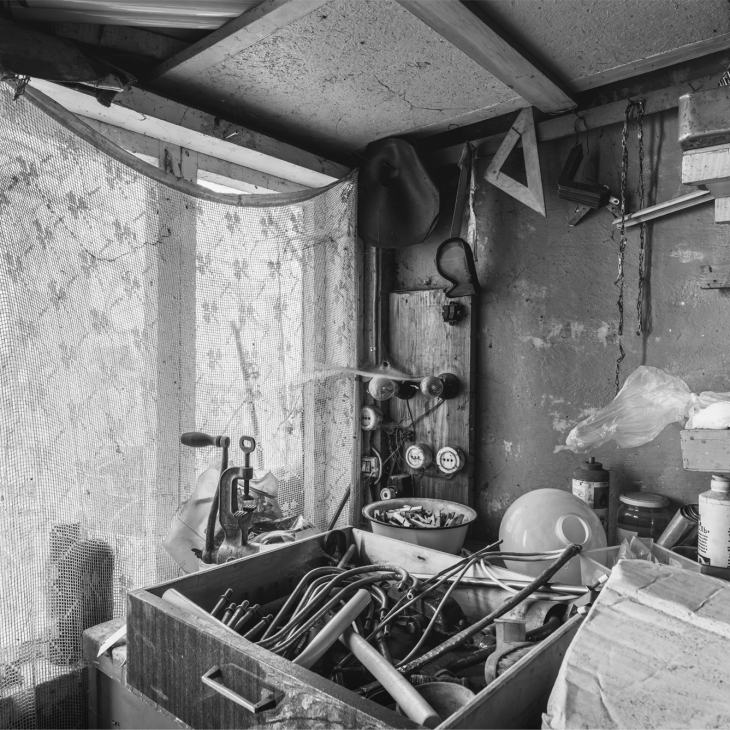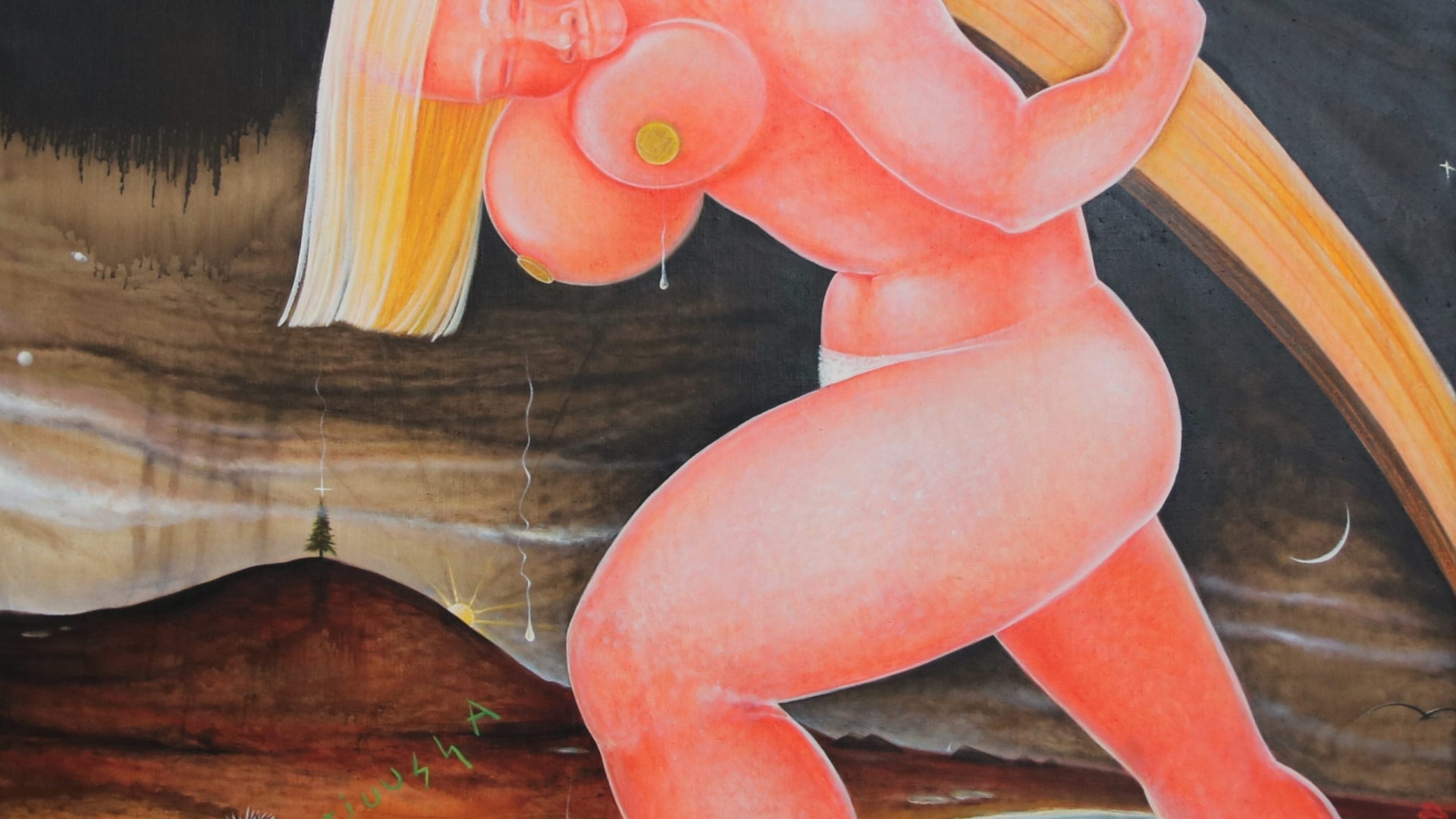(4) eset ostukorvis

Hind: €600
There are both masculine and feminine origins hidden in every human being. Austrian pastors Freud and Jung thought it a century ago. Masculine is smart and brutal; the feminine is also smart but life-sustaining. Happy are those people whose two beginnings remain in harmonious balance. And happy are those nations that have a life-sustaining attitude in the first place. Our exhibition tries to study how the position of women is reflected in Estonian art. We give an art lover the task to consider whether an Estonian woman, in turn, has two opposites – power and spirit – in a reasonable balance. At first glance, Peeter Allik’s monumental painting “I Saw It,” which is filled with the power of pregnant women, makes you laugh. At the same time, it is astonishing the power women have as a life bearer and as a lifeguard. This power should be a powerful argument in the hands of women in the fight for a higher wage and a greater right to decide the fate of their country and people. Humor with brilliant ideas is inherent in contemporary art. We can no longer tolerate seriousness. Ilmar Kruusamäe’s “Secret Weapon” seems to be hoping that if instead of Kalevipoeg, his mother Linda is brought to the table behind Lake Peipsi, the woman can unravel the global tangle that men have woven over time. The birth year of the painting in 1990 is significant. Estonians had learned to read subtexts and symbols during the years of occupation. If we want to survive as a nation, we must not forget the skill in the future.

Ilmar Kruusamäe, SALARELV – LINDA LAUAVEDU, õli, 1988, erakogu
The male gender is represented in the exhibition mainly as mythological-animalistic figures – for example, the chief god of the Greeks Zeus, who tries to seduce Leda as a swan. This myth is surprisingly richly enlightened in Estonian art. Canalist Erich von Kügelgen and expressionist Lilian Mosolainen on canvas, Anton Starkopf on wood sculpture, Eduard Wiiralt on wood carving, Jüri Arrak in both painting and graphics. The works of Jaak Arro and Kersti Rattuseg, which appeared in our art life during the mythical lives in the 1980s, bring a mystical soul to the exhibition hall with swans and wolves. Not to mention Lembit Sarapuu, whose ancient world intertwines the bodies of Estonian women with those of a bear, a cow, and a wild boar. Traditions from distant times, when nobody did discuss gender roles, live on in all of them.
The Estonian painting classic Eerik Haamer has lifted a woman to the pedestal as a mother, a hard worker, and a seductively mysterious creature. On one Haamer’s canvas, naked islanders wash sheep. On the other naked townspeople play cards. The mystery is especially evident in Jüri Palm’s painting “Staying in the White Light,” where blue twilight combines three views of nudes. In addition to the feminine charm, Tiit Pääsuke has also conveyed a subtle feminine intellect in his portraits. Peeter Mudist draws pure light and pure joy from being together from the painting “There is a code in the light,” and his “The Little Flyer” makes you think that there are often more memorable, seemingly insignificant things in life.
One of the rarities of the exhibition is Kris Lemsalu’s gift to Tiit Pääsuke. The gift consists of the skull of an animal painted by Lemsalu and the artist’s silk stockings. In response to Lemsalu, Swallow also painted a skull and a quarter of it inside – a portrait of an extravagant artist without a mask!
The repertoire of the New Art Museum often includes works by artists with Pärnu roots, this time from Peeter Somelar, Vello Tamme, Andrus Joonas, Jaak Arro, Malle Leis, and Uno Roosvalt.
Curators of the exhibition: Mai Levin and Mark Soosaar
Galerii nimi: Uue Kunsti Muuseum (UKM)
Aadress: Rüütli 40a, Pärnu, Pärnu County, Estonia
Lahtiolekuajad: K-P 11:00 - 18:00
Avatud: 06.06.2021 — 05.09.2021
Aadress: Rüütli 40a, Pärnu, Pärnu County, Estonia
Lahtiolekuajad: K-P 11:00 - 18:00
Piletiinfo: 9.- / 6.-
Avatud: 06.06.2021 — 05.09.2021
